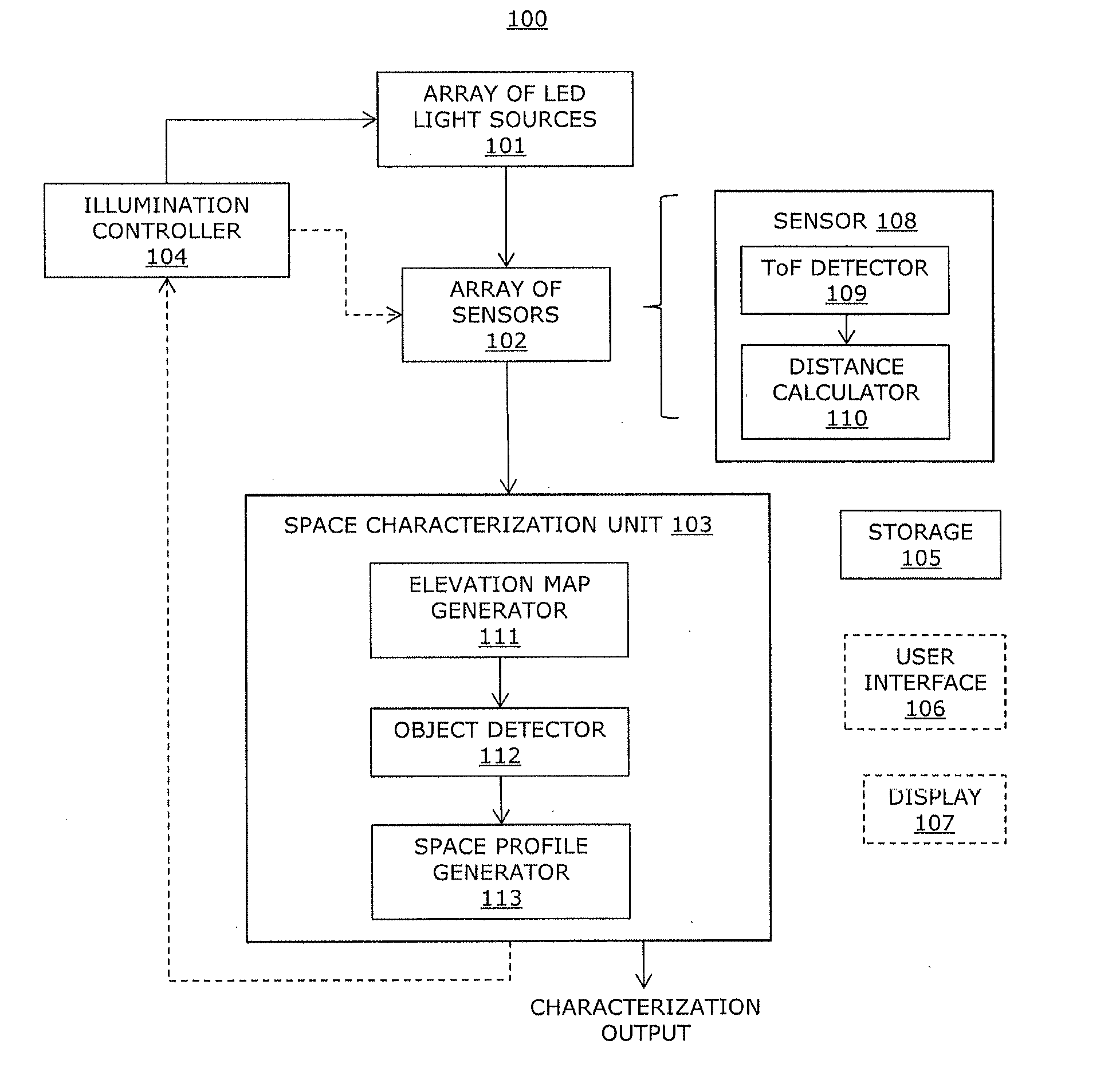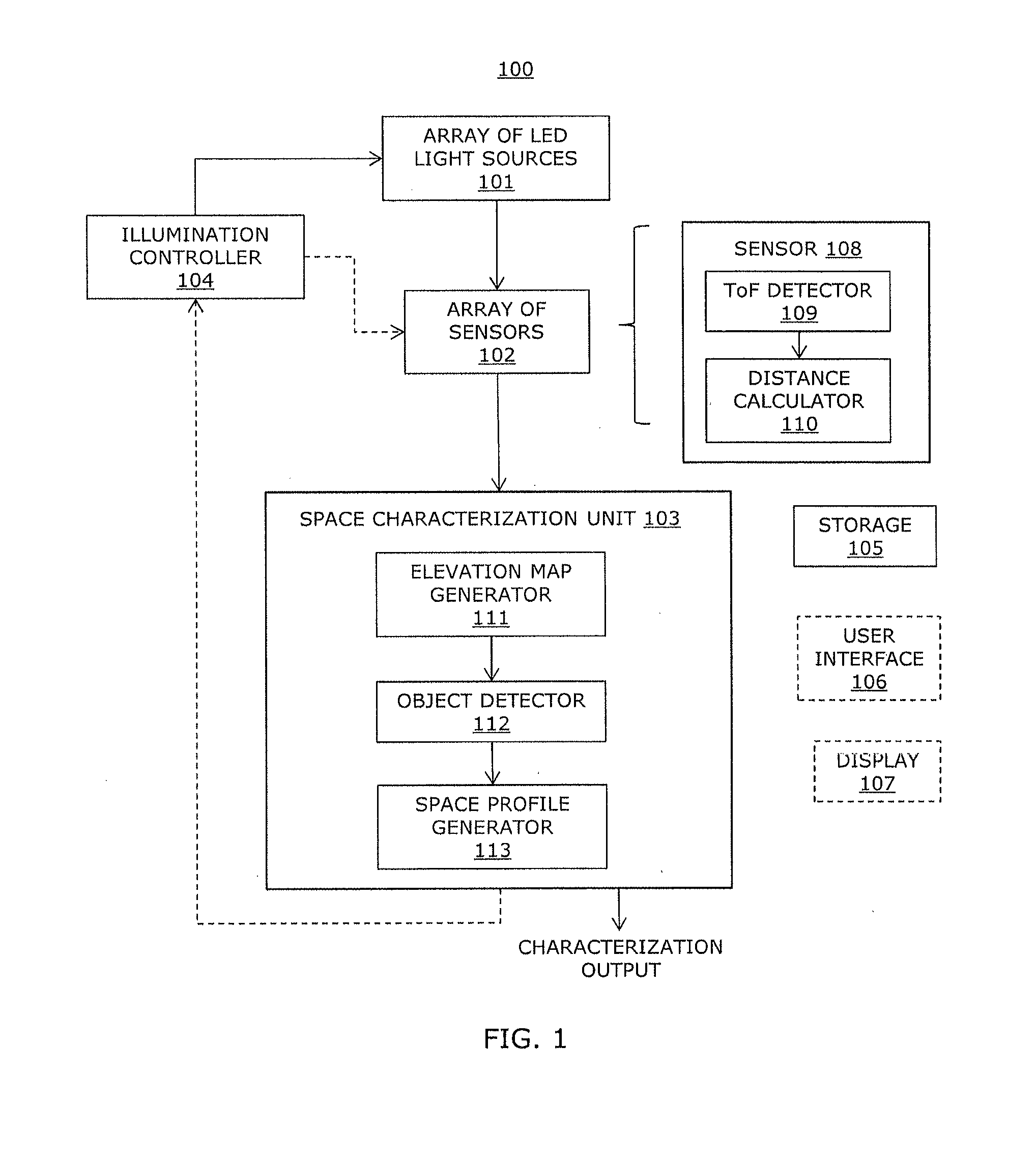Sensory lighting system and method for characterizing an illumination space
a lighting system and sensor technology, applied in the field of illumination systems and methods for characterizing a space for illumination, can solve the problems of sensors and ultrasonic sensors, system rarely used, and lighting system electric energy consumption could be reduced by over 35%
- Summary
- Abstract
- Description
- Claims
- Application Information
AI Technical Summary
Benefits of technology
Problems solved by technology
Method used
Image
Examples
Embodiment Construction
[0017]Methods for characterizing an illumination space and an illumination system including an array of LED light sources are described.
[0018]Aspects of the invention include exemplary methods for characterizing a space for illumination and an exemplary illumination system. The illumination system may include an array of light sources that, in addition to illuminating a given volume of space, encodes the illumination with a time modulated data signal (i.e., a predetermined modulation pattern), and incorporates a network of widely-separated, low pixel-count light sensors distributed throughout the illumination system. The illumination system may be used for indoor lighting or outdoor lighting. The sensors may measure a time between emission from a given light source (including the time modulated data signal) and the return of some portion of the light containing the data signal. The returned portion of the light may be scattered from one or more surface of objects in the space illumi...
PUM
 Login to View More
Login to View More Abstract
Description
Claims
Application Information
 Login to View More
Login to View More - R&D
- Intellectual Property
- Life Sciences
- Materials
- Tech Scout
- Unparalleled Data Quality
- Higher Quality Content
- 60% Fewer Hallucinations
Browse by: Latest US Patents, China's latest patents, Technical Efficacy Thesaurus, Application Domain, Technology Topic, Popular Technical Reports.
© 2025 PatSnap. All rights reserved.Legal|Privacy policy|Modern Slavery Act Transparency Statement|Sitemap|About US| Contact US: help@patsnap.com



